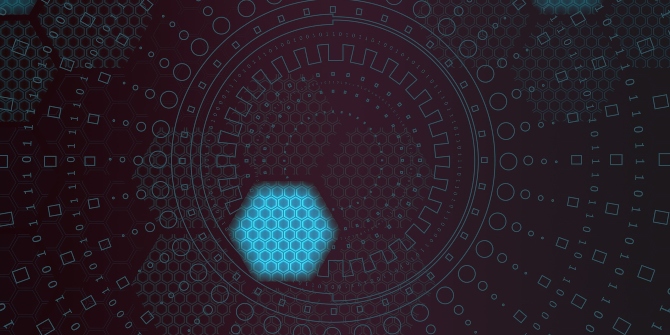
With the dramatic fall in popularity of cryptocurrencies and the wave of unpredictable volatility in the value of these immaterial currencies, comes a seeming drop in the interest in blockchain. Yet, the development of this technology and its application are still charging ahead in full force and blockchain’s full potential is yet to be seen, understood and implemented. We have been entertaining ourselves mainly with dress rehearsals so far, but much more lies ahead. At the same time, the public and the media appear to have shown a much greater fanfare for artificial intelligence (AI). This is not surprising as this technology is advancing at breakneck speed. It is therefore only a matter of time before these two technologies join up. Or at least this is a scenario we tend to believe plausible, out of the many speculations.
Blockchain can be described a foundational technology that operates as infrastructure for a time-stamped series of immutable record data — which is managed by a cluster of computers secured and linked to each other using cryptographic principles. Because of this setup, the data stored on the blocks act as a single trustworthy source of information to be shared by different parties simultaneously. The blockchain is equally associated with a modern form of storage of value, this being interpreted in its most multilateral definition.
On the other hand, the rapid advancements of AI have led to the possibility of using machines to take on a widening range of human tasks. Yet, one of the biggest challenges and constraints to the developments of AI is the quality of data – AI requires data to be as complete and comprehensive as possible to train new models and for existing models to perform well.
1+1=3
Let’s see the benefits that AI and blockchain can jointly bring. Because blockchain can act as a trustworthy source of information, it is possible to feed AI with validated and authenticated data. This would prevent the “garbage in, garbage out” nature of some machine learning models, thereby enabling the machines to be much better at decision-making. This may sound mundane, but it is an important consideration. In the years to come, the number of allegedly biased AI systems and algorithms may increase because of the inferior quality and lack of comprehensiveness of the data they are fed. This is quite a serious problem, probably most significant than what one may think, as poor data choices have shown to lead AI models to display manifested biases of all kinds, if not downright discrimination, ranging from gender to racial and cultural ones.
In addition, blockchain can also be used to monitor and record any abnormalities in data that could result from bias. Avoiding these distortions would enable machine learning algorithms to evolve in efficacy and to minimise the chance for specific bias to show up again in future AI models – and to feed into AI systems. So, blockchain would be somehow a guarantor of the quality of the data used for machine learning and a safeguard for the infiltration of poor/bad data into the algorithm.
Another benefit is data privacy. Very often, sensitive and personal data are susceptible to breaches and/or identity theft. The EU has already implemented the general data protection regulation (GDPR). Blockchain can be used to protect identities from theft, handle the issues of authentication and creation of encrypted digital identities. As such, blockchain becomes a perfect gateway that leads to secure data transfer over the internet, although the reality of what we describe still lies in potential terms rather than actual ones.
Examples from healthcare
All things considered, there are areas where a combination of blockchain and AI could demonstrate their synergy. For example, healthcare could utilise all the benefits from blockchain technology in terms of providing validated, secured and GDPR-aligned data to enhance cancer diagnosis. By cross-examining the private data collected, processed and validated through blockchain, AI would be much more able to identify early signs of cancer in patients. Better yet, the benefits are also reciprocated, AI can assist blockchain in smart contract testing by providing for example, automated troubleshooting or debugging and root cause analysis and identification. Imagine the foreseeable benefits of medical information that do not get compromised by bad storage or loss of storage and allows for an even more meaningful iteration process to occur, improving the efficacy of the code used to run the algorithm.
Another possible use of the combination is in clinical trials. For instance, AI and blockchain can be used to directly increase the quantity and quality of patients recruited for clinical trials. With the use of natural language processing, patient data on paper can be converted into structured digital files with greater accuracy and speed, all at lower cost than what humans can do. Using blockchain, on the other hand, individual patients can store and control access to their medical data, and make it visible to trial recruiters, who could then reach out to the patients if their data qualifies for the clinical trial. The decentralised nature of blockchain gives patients control over their data, with the ability of giving and revoking consent. Blockchain can also be used to handle trialled results properly while AI can produce better insights into certain clinical matters than the conventional human-based process.
Even though the developments of both blockchain and AI are still in their infancy, their potentials are enormous. The combined use of these two general purpose technologies will mostly open a great deal more opportunities and possibilities and likely, more jobs. It is only a matter of time before they start to join forces to ultimately become the brothers-in-arms serving as the basis of the technologies that are an integral part of daily lives, purported to serve us better and to place human-centric values back where they belong.
♣♣♣
Notes:
- This blog post is based on the authors’ book “The AI Republic: Building the Nexus Between Humans and Intelligent Automation”, with Danny Goh, Lioncrest Publisher, Houston (2019)
- The post gives the views of its authors, not the position of LSE Business Review or the London School of Economics.
- Featured image by TheDigitalArtist, under a Pixabay licence
- Before commenting, please read our Comment Policy
 Terence Tse is a co-founder of Nexus FrontierTech, an artificial intelligence firm. He is also a professor at ESCP Business School. Terence has worked with more than 30 corporate clients and intergovernmental organisations including the EU, UN and EBRD in advisory and training capacities. He has published over 100 articles commenting on current business affairs, and is a speaker and an author of three books.
Terence Tse is a co-founder of Nexus FrontierTech, an artificial intelligence firm. He is also a professor at ESCP Business School. Terence has worked with more than 30 corporate clients and intergovernmental organisations including the EU, UN and EBRD in advisory and training capacities. He has published over 100 articles commenting on current business affairs, and is a speaker and an author of three books.
 Zoran Đorđević is managing partner at COTRUGLI Business School, and CEO of blockchain project TOLAR HashNET. He has more than 15 years of experience in education and consulting. Zoran is passionate about blockchain technology and its educational and business implementation.
Zoran Đorđević is managing partner at COTRUGLI Business School, and CEO of blockchain project TOLAR HashNET. He has more than 15 years of experience in education and consulting. Zoran is passionate about blockchain technology and its educational and business implementation.
 Mark Esposito is a professor of business and economics at Hult International Business School and a faculty member at Harvard University since 2011. Mark is a fellow at the Judge Business School, University of Cambridge. He co-founded Nexus FrontierTech, an artificial intelligence firm, and works at the interface between business, technology and government.
Mark Esposito is a professor of business and economics at Hult International Business School and a faculty member at Harvard University since 2011. Mark is a fellow at the Judge Business School, University of Cambridge. He co-founded Nexus FrontierTech, an artificial intelligence firm, and works at the interface between business, technology and government.





